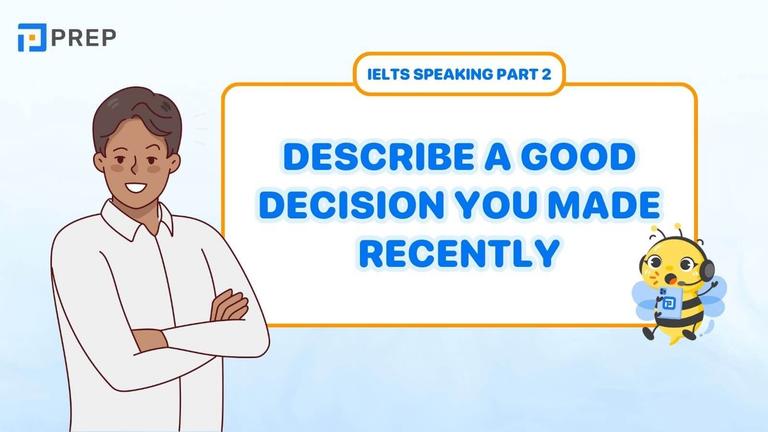Affirmative Sentences, Demystified: A Complete Breakdown with Rules & Examples
This guide covers affirmative sentences - the positive statements that form the foundation of English communication. You'll learn how they're built using the Subject + Verb + Object structure, how to flip them into negatives, and when to use them effectively in conversation.
We start with the basics and move into more complex territory, covering different tenses, sentence complexity, and professional usage. The examples and comparison tables show you how affirmative sentences relate to questions and negative statements, giving you practical tools for clearer communication.
- I. What Is an Affirmative Sentence?
- II. How to Make an Affirmative Sentence?
- III. Affirmative Sentence Example
- IV. Affirmative vs. Negative vs. Interrogative: A Clear Comparison
- V. Transforming Affirmative to Negative Sentences
- VI. Beyond the Basics: Advanced Concepts and Common Pitfalls
- VII. Expanding Your Knowledge: Key Questions Answered

I. What Is an Affirmative Sentence?
-
Defining "Affirmative": A Statement of Fact, Certainty, and Truth
Affirmative sentences stand as a positive statement that declares something as true, real, or factual without any form of denial or contradiction. These positive sentences represent the most common and default sentence type in English communication. When you make an affirmative statement, you're essentially confirming the existence, occurrence, or validity of something in a straightforward manner.
The term "affirmative" derives from the Latin word "affirmare," which means "to make firm" or "to strengthen." Unlike questions that seek information or negative statements that deny something, affirmative sentences present information as established fact, making them the foundation of most conversations and written communications.
-
The Core Purpose of Affirmation in Language and Communication
Affirmative sentences serve essential functions in human communication, extending beyond grammar rules to become fundamental tools for expressing thoughts and sharing experiences. They enable us to:
-
Convey factual information about the world around us
-
State personal opinions and beliefs with confidence
-
Describe events as they unfold or have occurred
-
Make clear declarations about intentions and plans
In professional settings, affirmative sentences establish credibility and authority, while in personal interactions, they help build trust and understanding between speakers. These positive statements create a foundation for productive dialogue by presenting information in its most accessible form, allowing listeners and readers to process information efficiently.
II. How to Make an Affirmative Sentence?
The construction of affirmative sentences follows a straightforward yet powerful formula:
Subject + Verb + Object (SVO)
This fundamental pattern provides the framework for creating clear, logical statements that communicate meaning effectively across various contexts.
Understanding the SVO Components:
-
Subject: The performer of the action or entity being described
-
Verb: The action being performed, state of being, or relationship between elements
-
Object: Receives the action or completes the meaning of the verb
Consider this example: [The cat (Subject)] + [chased (Verb)] + [the mouse (Object)]. This demonstrates how each component contributes to the sentence's overall meaning while maintaining natural English syntax.
Adapting to Different Verb Types:
The SVO pattern adapts to accommodate different verb types while maintaining the fundamental positive assertion format:
-
Action verbs: "She writes a letter" - describes physical or mental activities
-
Linking verbs: "He is a teacher" - establishes connections between subjects and their attributes
-
Helping verbs: "They have finished their homework" - works with main verbs to express complex time relationships
This versatility demonstrates the robust nature of affirmative construction across various linguistic contexts and expression needs.
III. Affirmative Sentence Example
Mastering affirmative sentences across different contexts and structures provides the foundation for natural, confident communication in both everyday and professional situations.
-
Basic Affirmative Sentence Examples for Everyday Use
Common everyday affirmative sentences that you'll use in routine conversations:
-
Weather descriptions: "The sun is shining" (present continuous)
-
Personal preferences: "I like coffee" (simple present with direct object)
-
Current activities: "The children are playing outside" (present continuous with location)
-
General facts: "Water boils at 100 degrees Celsius"
-
Daily routines: "She walks to work every morning"
-
Comprehensive Examples Across All Major English Tenses
Understanding how affirmative sentences work across different tenses enables precise temporal expression:
-
Present Simple: "Students study grammar rules" (habitual actions)
-
Past Simple: "She completed the assignment yesterday" (finished actions)
-
Future Simple: "We will travel to London next month" (planned actions)
-
Present Perfect: "They have visited several countries" (past experience with present relevance)
-
Past Continuous: "He was reading when the phone rang" (ongoing past actions)
-
Future Perfect: "By December, I will have finished my degree" (future completion)
-
Affirmative Sentences in Different Structures
Affirmative statements adapt to various complexity levels to match communication needs:
-
Simple: "The train arrived" (one independent clause)
-
Compound: "The train arrived, and the passengers disembarked" (two independent clauses joined by conjunction)
-
Complex: "The train arrived after the storm had passed" (independent clause with dependent clause for additional context)
This structural versatility allows speakers and writers to express ideas with appropriate sophistication for their audience and purpose.
IV. Affirmative vs. Negative vs. Interrogative: A Clear Comparison
Understanding the fundamental differences between affirmative, negative, and interrogative statements provides the foundation for effective English communication.
-
The Affirmative Statement: Affirmative statements function as the default mode of English communication, presenting information directly and clearly. These positive declarations establish facts, express opinions, and convey information with straightforward clarity.
-
The Negative Statement: Negative statements introduce denial or contradiction using words like "not," "never," "nothing," or "nobody." While structurally more complex, they serve essential functions in expressing disagreement, describing absent conditions, and clarifying misconceptions.
-
The Interrogative Statement: Interrogative statements transform declarative content into questions that seek information, confirmation, or clarification. These forms typically invert subject-verb order or introduce question words (who, what, when, where, why, how) to prompt responsive communication.
Understanding the fundamental differences between negative and affirmative sentences requires examining their structural characteristics, communicative purposes, and practical applications in everyday English usage. These contrasting sentence types work together to provide speakers with comprehensive tools for expressing complete thoughts and nuanced meanings.
|
Aspect |
Affirmative Sentences |
Negative Sentences |
|
Definition |
An affirmative sentence is any sentence that is positive. |
A negative sentence is a sentence that represents a negative thought, action or opinion. |
|
Structure |
It can be an assertive sentence or a declarative sentence which has no negative words. |
It is a statement with the word 'not' after the verb. |
|
Example |
I like chocolate cakes. |
I do not like chocolate cakes. |
|
Function |
States facts, expresses positive information |
Denies, contradicts, or expresses absence |
|
Key Elements |
Subject + Verb + Object (standard word order) |
Negative words (not, never, nobody) + standard structure |
|
Question Form |
Does she drive a car? |
Doesn't she drive a car? |
This comparison table illustrates how the same basic idea can be expressed through opposite polarities, demonstrating the flexibility and precision that English grammar provides for communicating subtle differences in meaning and intention.
V. Transforming Affirmative to Negative Sentences
Understanding how to transform affirmative to negative sentences provides essential skills for expressing contrasting ideas, correcting misconceptions, and communicating denial effectively. This transformation process follows systematic patterns that vary depending on the verb type and tense structure.
The fundamental principle involves introducing negation markers while maintaining proper grammatical structure and preserving the original meaning's temporal characteristics. Mastering these conversion techniques enhances your ability to express nuanced thoughts in various communication contexts.
Systematic Transformation Patterns Across All Tenses
The transformation from affirmative to negative sentences follows predictable patterns based on verb types. Converting sentences with "to be" verbs requires simply inserting "not" after the verb, while sentences with regular verbs need auxiliary verbs combined with "not" before the main verb.
|
Tense |
Affirmative Sentence Example |
Negative Transformation |
Transformation Rule |
|
Present Continuous |
They are watching a movie right now. |
They are not watching a movie right now. |
Add "not" after "to be" auxiliary |
|
Past Continuous |
I was reading a book when the phone rang. |
I was not reading a book when the phone rang. |
Add "not" after "to be" auxiliary |
|
Present Simple |
Ms. Kim works at a bank on Sunday. |
Ms. Kim does not work at a bank on Sundays. |
Use "do/does + not" + base verb |
|
Present Perfect |
Aladdin has visited that museum before. |
Aladdin has not visited that museum before. |
Add "not" after "have/has" |
|
Present Perfect Continuous |
They have been playing soccer all afternoon. |
They have not been playing soccer all afternoon. |
Add "not" after "have/has" |
|
Past Simple |
Hulk visited Paris last summer. |
Hulk did not visit Paris last summer. |
Use "did + not" + base verb |
|
Past Perfect |
Mona had finished her meal by the time I arrived. |
Mona had not finished her meal by the time I arrived. |
Add "not" after "had" |
|
Past Perfect Continuous |
My friends had been studying for hours when I called. |
My friends had not been studying for hours when I called. |
Add "not" after "had" |
|
Simple Future |
My mother will go to the store tomorrow. |
My mother will not go to the store tomorrow. |
Add "not" after "will" |
|
Future Continuous |
My team will be working on this project next week. |
My team will not be working on this project next week. |
Add "not" after "will" |
|
Future Perfect |
Jesus will have finished her book by month-end. |
Jesus will not have finished her book by month-end. |
Add "not" after "will" |
|
Future Perfect Continuous |
By 11 pm tonight, my brother and I will have been watching films for hours. |
By 11 pm tonight, my brother and I will not have been watching films for hours. |
Add "not" after "will" |
VI. Beyond the Basics: Advanced Concepts and Common Pitfalls
-
"Hidden Negatives": Affirmative Sentences with Negative Meanings
Advanced English communication employs sophisticated constructions where grammatically affirmative sentences convey negative meanings through specific adverbs and expressions. These "hidden negatives" require careful attention to both structure and meaning for accurate interpretation.
Common "Hidden Negative" Adverbs:
-
hardly: "She hardly speaks during meetings" (meaning: she almost never speaks)
-
scarcely: "He scarcely finished on time" (meaning: he barely finished)
-
rarely: "They rarely visit their grandparents" (meaning: they don't visit often)
-
seldom: "I seldom eat fast food" (meaning: I almost never eat it)
While these sentences contain no explicit negative words like "not" or "never," their semantic meaning clearly expresses limitation, infrequency, or near-absence of the described actions.
-
The Art of Agreement: How to Correctly Respond to Affirmative Statements
Responding appropriately to English affirmative sentences requires understanding sophisticated agreement structures that extend beyond simple expressions like "Me too." These advanced response patterns demonstrate linguistic competence and facilitate smooth conversational flow.
Formal Agreement Structure:
-
"So + auxiliary verb + subject":
-
"I enjoy classical music" → "So do I"
-
"Mary has finished her project" → "So has she"
-
Less Formal Agreement Structure:
-
"Subject + auxiliary verb + too":
-
"I enjoy classical music" → "I do too"
-
"Mary has finished her project" → "She has too"
-
Both patterns provide grammatically precise and contextually appropriate forms of concurrence for different communication settings.
Having mastered the fundamental concepts of affirmative sentence construction, recognition, and usage, you're now equipped to explore specific questions and clarifications that commonly arise in advanced English study. These targeted explanations will address remaining areas of confusion and provide the comprehensive understanding necessary for confident application of affirmative sentence principles in diverse communication contexts.
VII. Expanding Your Knowledge: Key Questions Answered
-
Are all positive statements considered affirmative sentences?
Yes, all positive statements that declare something as true or factual are considered affirmative sentences. However, the term "positive" in grammar specifically refers to the absence of negation words, while "affirmative" emphasizes the confirmatory nature of the statement. Both terms describe sentences that assert rather than deny information, making them functionally equivalent in most grammatical contexts.
-
Do English affirmative sentences always require an object?
No, affirmative sentences do not always require an object. While many follow the Subject + Verb + Object pattern, some affirmative sentences use intransitive verbs that don't need objects, such as "The baby sleeps" or "Birds fly." Additionally, sentences with linking verbs like "She seems happy" use complements rather than objects to complete their meaning.
-
How do you identify affirmative sentences in complex paragraphs?
Identify affirmative sentences by looking for statements that assert facts or opinions without negative words like "not," "never," or "nothing." Focus on the main clause's structure and meaning rather than dependent clauses that might contain negation. Even in complex sentences, if the primary message confirms or states something positively, the sentence functions as affirmative overall.
-
Can questions be transformed into affirmative sentences?
Yes, questions can be transformed into English affirmative sentences by converting the interrogative structure back to declarative form and providing the implied answer. For example, "Does she work here?" becomes "She works here," and "Where did they go?" becomes "They went to [specific location]." This transformation reverses the process of creating questions from statements.
Mastering affirmative sentences provides the foundation for confident English communication across all contexts, from casual conversations to professional presentations. As you continue developing your language skills, remember that these positive statements serve as the building blocks for expressing ideas clearly, sharing information effectively, and connecting meaningfully with your audience through the power of direct, confident expression.

Hi I'm Chloe, and I am currently serving as an Product Content Administrator at Prep Education. With over five years of experience in independent online IELTS study and exam preparation, I am confident in my ability to support learners in achieving their highest possible scores.
Comment
Premium content
View allPersonalized roadmap
Most read












